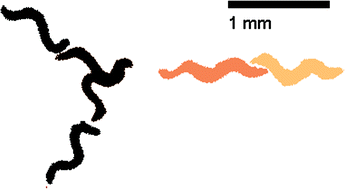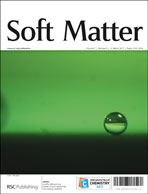The collective motion of nematodes in a thin liquid layer†
Abstract
Many organisms live in confined fluidic environments such as the thin liquid layers on the skin of host organisms or in partially-saturated soil. We investigate the collective behaviour of nematodes in a thin liquid layer, which was first described by Gray and Lissmann [J. Exp. Biol., 1964, 41, 135]. We show experimentally that nematodes confined by a thin liquid film come into contact spontaneously. By analysing the time scales of this aggregation, we suggest that the initial aggregation is driven by random collisions between nematodes but the continued collective motion is due to an attractive force between them arising from the surface tension of the layer. We show that for nearby nematodes this surface tension force is typically stronger than the force that may be exerted by the nematodes' muscles. We believe this to be the first demonstration of the “Cheerios effect” acting on a living organism. However, we find that being grouped together does not significantly alter the body stroke and kinematic performance of the nematode: there are no statistically significant changes of the Strouhal number and the ratio of amplitude to wavelength when aggregated. This result implies that nematodes gain neither a mechanical advantage nor disadvantage by being grouped together; the capillary force merely keeps them stuck together after a chance encounter.


 Please wait while we load your content...
Please wait while we load your content...